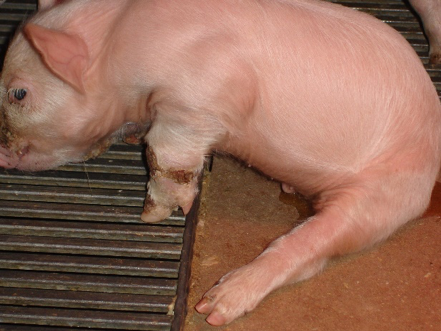PORCINE STREPTOCCUS. Its prevention with substitutes of amoxicillin: Lauric Acid?
The natural habitat of this microorganism is the respiratory tract (nasopharynx) and to a lesser extent in the digestive and genital tracts. It has also been isolated in dogs, horses, cats, ruminants and birds, which together with the possible reservoir of flies which can survive up to a week, complicates their epidemiology. It seems a more than accepted hypothesis that the use of lauric acid seems to drastically reduce the intestinal load of this bacterium at fecal / intestinal level and therefore its feco-oral transmission and subsequent nasopharyngeal multiplication.
The transmission from sows to suckling pigs occurs at the time of birth through both vaginal and respiratory (vertical contamination). Therefore, some weaning suckling pigs are positive (those of positive mothers) and others are negative (those of negative mothers), infecting each other by aerosol and direct contact, nose-nose and feco-oral, in this horizontal contagion. At this time the amount of bacteria is usually high on positive farms. In the same way, several studies determine deep gaps of precise knowledge on the dissemination of the bacteria among the different infected pigs. The greater or lesser maternal immunity that disappears around weaning will be one more risk factor for the appearence of the disease.

The greater or lesser virulence of Streptococcus suis on a farm is highly conditioned by the immunosuppression generated in the current practice of our farms by:
- Porcine Reproductive and Respiratory Syndrome Virus.
- Porcine Circovirus.
- Mycoplasma hyopneumoniae.
- Mycotoxicosis.
- Poli-medications
CONTROL MEASURES:
1. The Use of specific antibiotics (amoxicillins, penicillins, ampicillins) in feed and / or water or of substitutes for amoxicillin based on the active / available lauric acid. Its use is recommended for farrowing feed (sucklings) and in prestarter and starter, when antibiotic is not used, and in order to reduce the pressure of infection and the morbidity of the disease.
2. Good environmental and management conditions (correct ventilation and not much density)
3. Strict sanitary spaces with exhaustive disinfection (hot water + soap + disinfectant)
4. Control of insects,, rodents and birds that act as asymptomatic carriers.
5. Rapid destruction of corpses and isolation of chronically infected pigs (it is advisable to take protective measures when handling pigs infected with Porcine Streptococcus).

6. Exceptional measures of farrowing management that will include:
a. Only adopting suckling pigs when absolutely necessary.
b. Only adopting suckling pigs in cases where there is certainty that they have received sufficient colostrum from their mother.
c. Complete all adoptions between 36 and 48 hours after birth
d. Do not move sows, litters, or individual suckling pigs to other delivery rooms.
e. Weaning all sows from a room simultaneously, and working with a strict on everything in-everything system.
f. Sacrificing sick pigs or those that have a significantly lower weight at weaning.
g. The containers used to house the suckling pigs during handling and processing, such as plastic crates, baskets, etc., should be dedicated to a delivery room and should be disinfected before the next batch of litters in that room.
h. The delivery rooms should be steam-washed using an industrial detergent followed by final disinfection, letting them dry before reoccupying them.
i. They must wash their hands or wear disposable gloves after handling each litter.
j. Hypodermic needles should be changed after each litter
k. Two sets of tooth cutters should be used. They should be disinfected and dried with a clean cloth between litters.
l. The tails will be cut by thermal cauterization.
m. The navels should be allowed to heal naturally after spraying with iodine solution.
n. Do not practice "feed-back" (fecal feedback).
o. The sows should be washed before entering the delivery room
AT THE FOREFRONT ON PREVENTION OF STREPTOCOCCAL
Its high efficacy ensures an effective control of the infection (Streptococcus and Clostridium) and an increase of the production rates.

